Radiators are available in many styles and with a range of different functions, each catering to various needs and rooms. From traditional plumbed radiators, which use hot water from a boiler, to electric radiators which are perfect for spaces without access to plumbing, there's a solution for every requirement.
One of the most common types you'll find in UK homes are central heating radiators, which efficiently transfer heat from the hot water running through them. These include single-panel type 11 radiators suitable for smaller rooms, and the more powerful double and double plus models for larger spaces. Each type offers different levels of efficiency and comfort, making it essential to consider the specifics of your home when selecting a radiator.
For those seeking modern and stylish heating options, designer radiators such as dual-fuel and electric-powered towel warmers are another option to consider. These not only provide warmth but also add aesthetic value to your home.
Central Heating Systems Explained
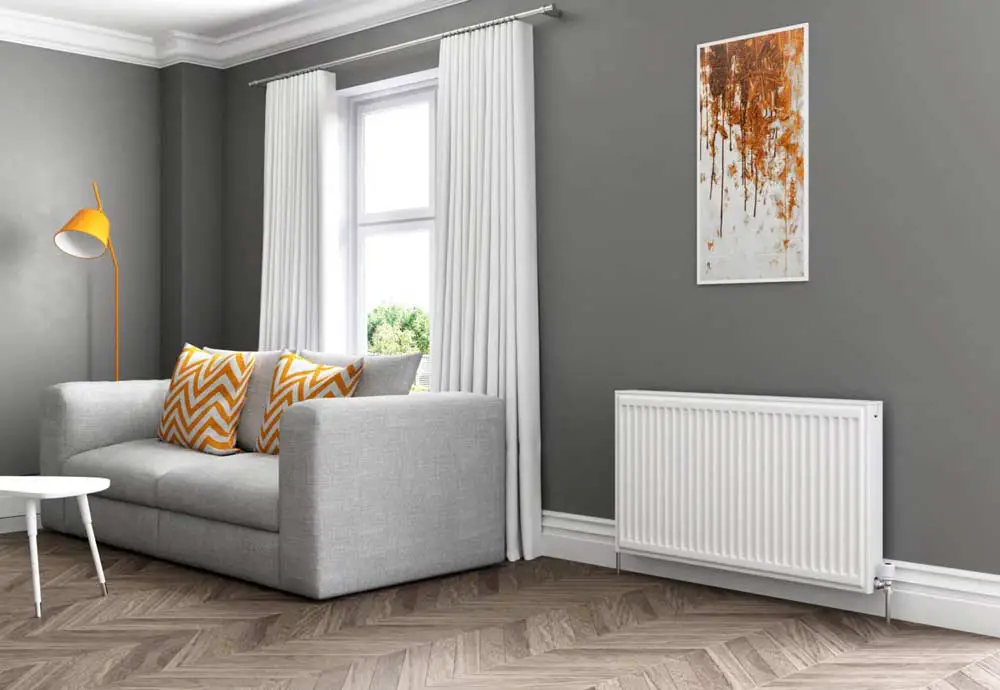
Image credit: stelrad.com
Central heating systems are an efficient way to distribute heat throughout a home. By leveraging various components, these systems ensure that living spaces stay warm, comfortable, and energy-efficient. Let me now explain further how central heating works and its main components.
How Central Heating Works
A central heating system operates by heating water, which then travels through a network of pipes to radiators or underfloor heating systems. The heated water originates from a boiler, which can run on gas, oil, or electricity. Once the water is heated, a pump pushes it through the pipes, transferring heat into the various living spaces.
Heat distribution through radiators works by transferring heat from the hot water into the surrounding air. As the water cools, it returns to the boiler for reheating. This continuous cycle ensures consistent warmth.
Components of Central Heating
Central heating systems consist of several key components. The boiler itself is the heart, responsible for heating the water for the whole operation. Radiators are the end points where the heat is released into each room. Pipes connect these elements, usually made of copper or plastic, with common domestic sizes including 15mm, 22mm, and 28mm.
Pumps play a crucial role in circulating the hot water through the system, while control systems, such as thermostats and valves, help manage the temperature and flow. Ensuring that the right type, size, and installation of these components is vital for the efficient and reliable operation of a central heating system.
Types of Radiators for Central Heating
When choosing radiators for your central heating, several types are available, each catering to different needs. Whether prioritising efficiency, aesthetics, or functionality, there are suitable options for every home.
Panel Radiators and Their Variants
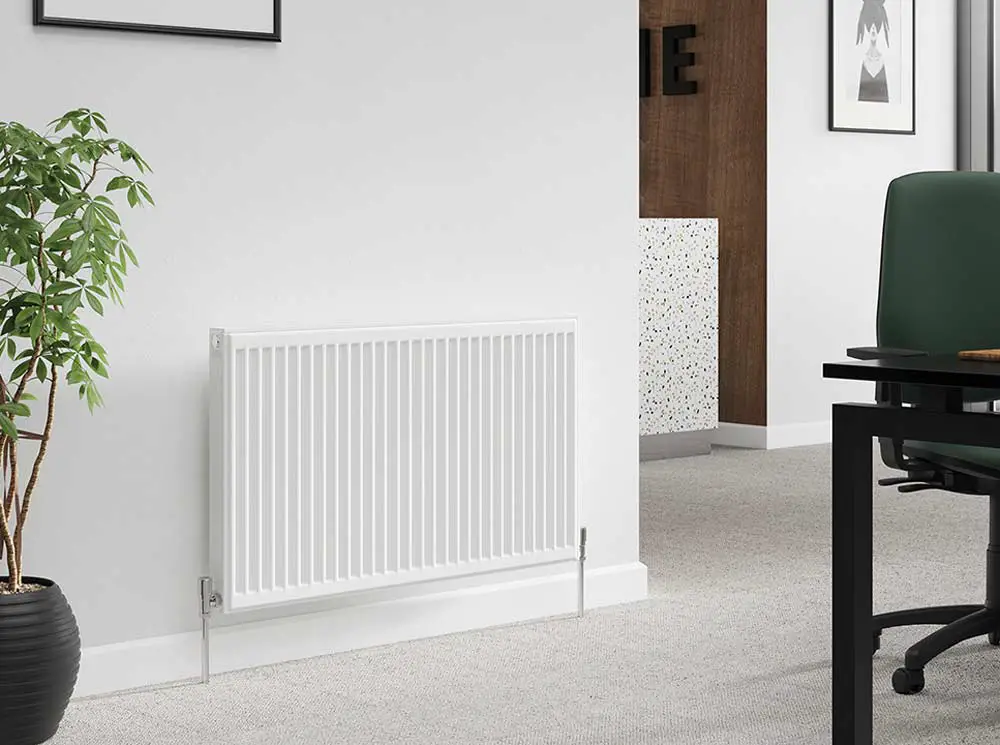
Image credit: stelradplc.com
Panel radiators are the most common choice for modern homes. Typically made from steel, they are available in single (Type 11), double (Type 22), and double plus (Type 21) panel configurations.
Single panel radiators are ideal for smaller rooms, offering a compact and efficient heating solution. For larger spaces, double panel and double plus radiators provide greater heat output due to their larger surface area. They come in both horizontal and vertical orientations, making them versatile for different room layouts.
Column Radiators and Their Elegance
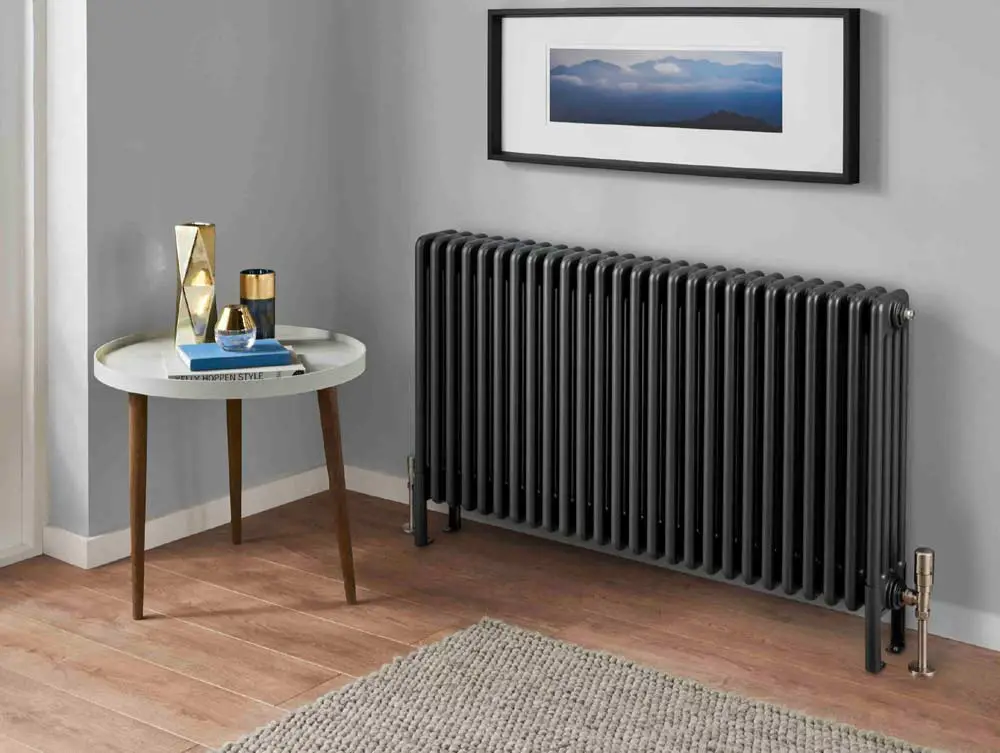
Image credit: radiatorsdirect.co.uk
Column radiators add a touch of elegance and a traditional feel to any home. Made from cast iron or steel, they consist of vertical columns that provide excellent heat output.
They work well in older properties or those aiming for a classic interior design. Due to their high thermal mass, column radiators retain heat longer, providing sustained warmth even after the heating is turned off. Available in various heights and widths, these radiators can be seamlessly integrated into any room size.
Designer and Decorative Radiators
For anyone wanting to make a style statement, designer and decorative radiators offer both function and flair. These radiators come in a multitude of shapes, colours, and finishes, ranging from minimalist flat panels to intricate geometric designs.
Designer radiators can be both horizontal and vertical, catering to different aesthetic preferences and spatial constraints. Ideal for modern homes, they often utilise materials such as aluminium for its quick heating properties and lightweight nature, ensuring efficient performance and contemporary style.
Towel Radiators for Functionality and Style
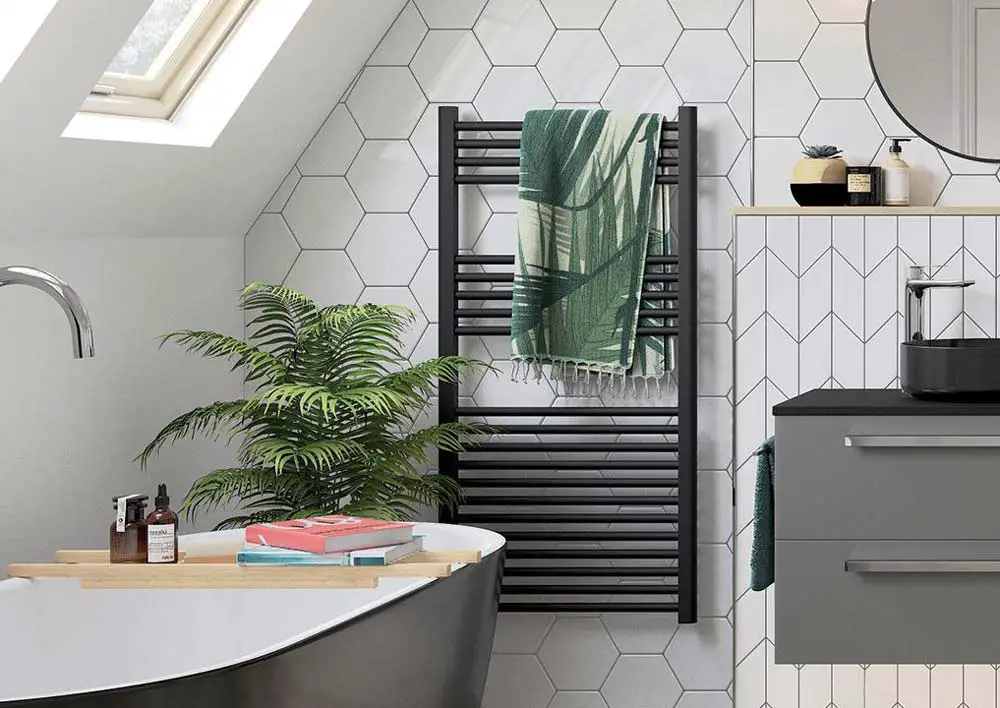
Image credit: hvpmag.co.uk
Towel radiators, also known as towel rails or warmers, combine practicality with aesthetic appeal. Ideal for bathrooms and kitchens, they keep towels warm and dry while also heating the room.
Available in central heating, electric, or dual-fuel models, these radiators offer a solution for various needs. Their designs range from simple ladder styles to more elaborate panels, fitting both traditional and modern interiors. Besides functional benefits, towel radiators add a touch of luxury to everyday routines.
Radiator Materials and Construction
Radiator materials and construction vary widely, impacting their efficiency, aesthetics, and suitability for different environments. Key materials include steel, aluminium, and cast iron, each offering unique benefits and characteristics.
Steel and Aluminium Radiators
Steel radiators are popular due to their versatility and ease of installation. They are lightweight and respond quickly to temperature changes, making them ideal for modern homes. Steel allows for a range of designs, from sleek and contemporary to more traditional styles.
Aluminium radiators have the advantage of being extremely lightweight and corrosion-resistant. This material heats up and cools down rapidly, offering precise control over room temperature. Aluminium radiators are also energy-efficient, making them a smart choice for reducing energy bills.
Both steel and aluminium radiators come in a variety of finishes and colours, enabling easy integration into any interior design scheme. Their construction often involves single or double panels with internal fins to increase surface area and heat output.
Timeless Cast Iron Radiators
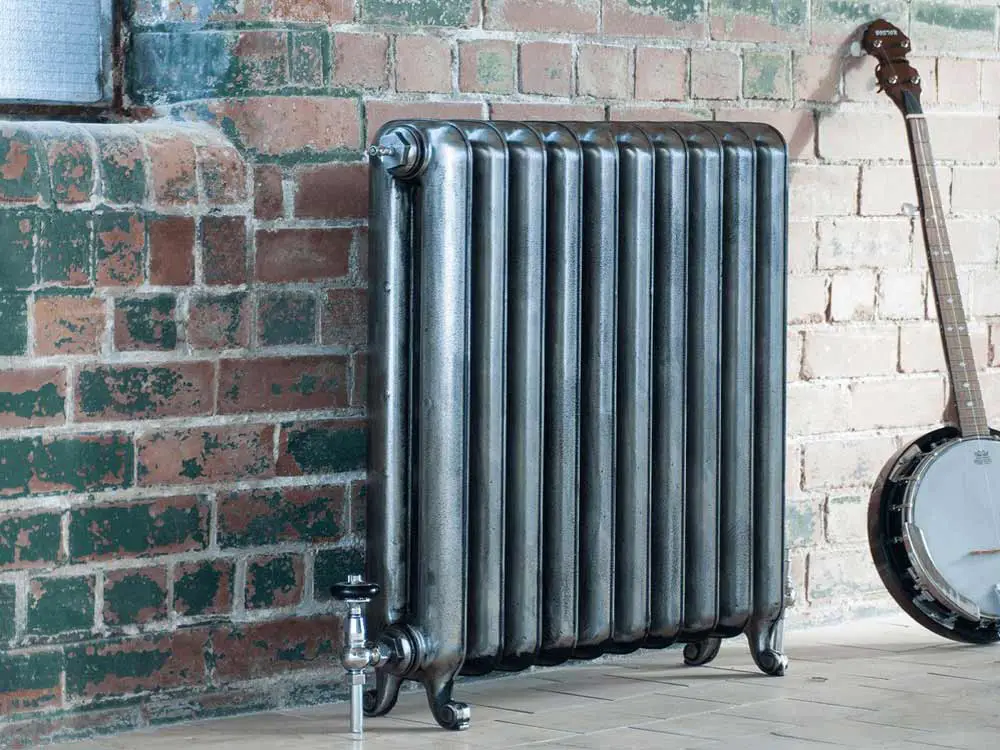
Image credit: homerefresh.co.uk
Cast iron radiators are cherished for their durability and classic aesthetic. These radiators retain heat for longer periods, providing a steady, even warmth even after the heating system is turned off. This quality makes them ideal for maintaining consistent indoor temperatures.
The construction of cast iron radiators often includes ornate detailing, adding a touch of elegance to any room. They are heavier and take longer to heat up compared to steel and aluminium options, but their thermal mass makes them highly effective in large spaces or older buildings.
Cast iron radiators require more robust installation due to their weight. They can be more challenging to install but offer great long-term value due to their longevity and minimal maintenance requirements. These radiators are a perfect blend of function and historical charm.
Installation and Energy Efficiency
When installing radiators, it's crucial to consider both proper fitting and ways to maximise energy efficiency. Efficient radiators not only save on energy costs but also ensure maximum comfort.
Fitting and Integrating Radiators
Properly fitting and integrating radiators into a central heating system is critical for safety and efficient operation. Plumbed central heating radiators require installation into existing pipework. This involves attaching the radiator to the wall and connecting it to the water circulation system.
The most common radiator sizes require valves in either 15mm or 22mm, which are compatible with most home plumbing systems. It's essential to ensure that the valves and pipes match in size to prevent leaks and ensure seamless operation.
If considering electric radiators, they're simpler to install, often requiring only a power outlet. This can be a significant advantage in rooms without easy access to the central plumbing system.
Maximising Heat Efficiency
Radiator efficiency can be significantly improved by selecting the appropriate material and type. Electric radiators are 100% efficient at the point of use since all the electrical energy is converted directly into heat.
For plumbed radiators, material choice plays a vital role. Aluminium radiators are particularly efficient due to their excellent heat conduction. They heat up rapidly and require less water, translating to faster and more efficient heating.
Additionally, placing radiators strategically, such as under windows, can help improve thermal circulation in the room, ensuring even distribution of heat. Ensuring that radiators are not obstructed by furniture or curtains can further enhance their effectiveness.
Selecting the Right Radiator
When choosing the right radiator, it's crucial to consider the heat output required and the aesthetic fit within your space. This involves careful measurement and understanding of the British Thermal Unit (BTU) ratings necessary for each room type.
Sizing and BTU Calculations
Selecting the right radiator size is all about the room’s heating requirements. BTU (British Thermal Unit) is a standard measure used to determine the amount of energy needed to heat a room. To find the correct radiator, you must first calculate the BTU requirement for the specific room.
Consider factors such as room size, ceiling height, window size, and insulation quality. There are BTU calculators available online that simplify this process. Input the room dimensions and other variables to receive an estimated BTU rating.
Here’s a simple table for reference:
| Room Type | Approx. BTU Requirement |
|---|---|
| Small Bedroom | 2,000 - 3,000 BTU |
| Medium Bedroom | 3,000 - 4,000 BTU |
| Large Living Room | 4,000 - 6,000 BTU |
| Bathroom | 1,500 - 2,500 BTU |
Ensuring the radiator matches the BTU requirement means optimal heating efficiency and comfort.
Radiator Styles to Suit Your Space
The style of the radiator is just as important as its size. Various styles blend functionality with aesthetic appeal. Some types include:
- Single Panel Radiators: These are simple, efficient for smaller rooms and spaces.
- Double Panel Radiators: Provide more heat output and are ideal for larger rooms.
- Vertical Radiators: Great for rooms with limited horizontal space; they provide ample heat without taking up much wall space.
- Horizontal Radiators: They sit low on walls, making them suitable for under windows.
- Column Radiators: Offer a classic look and fit well in traditional or period-style homes.
Choose a style that complements your interior design while meeting the room's heating requirements. For example, vertical radiators can be a stylish statement in a modern setting, whereas column radiators work well in more classic interiors.


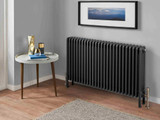
 Author: Matthew Chiappini
Author: Matthew Chiappini